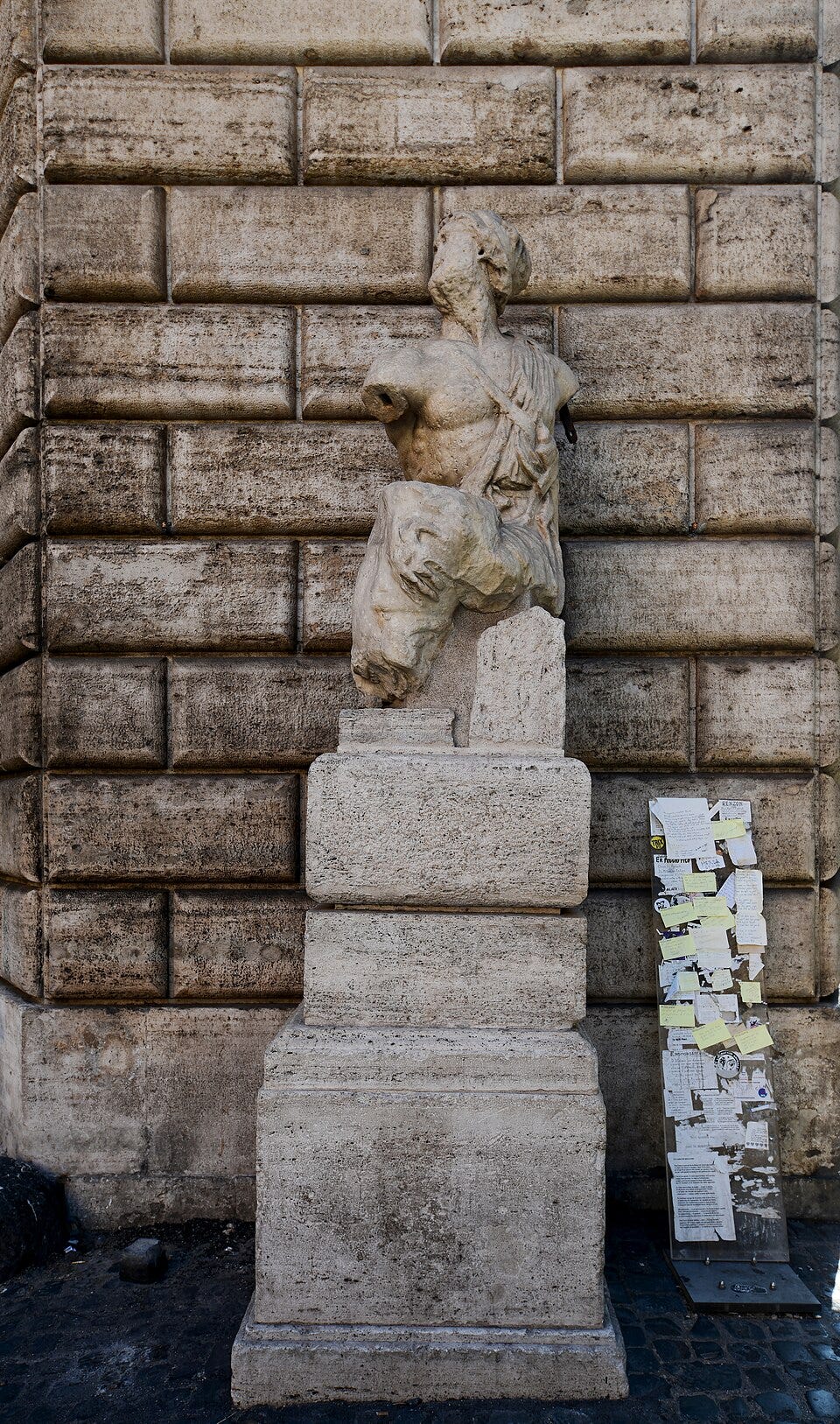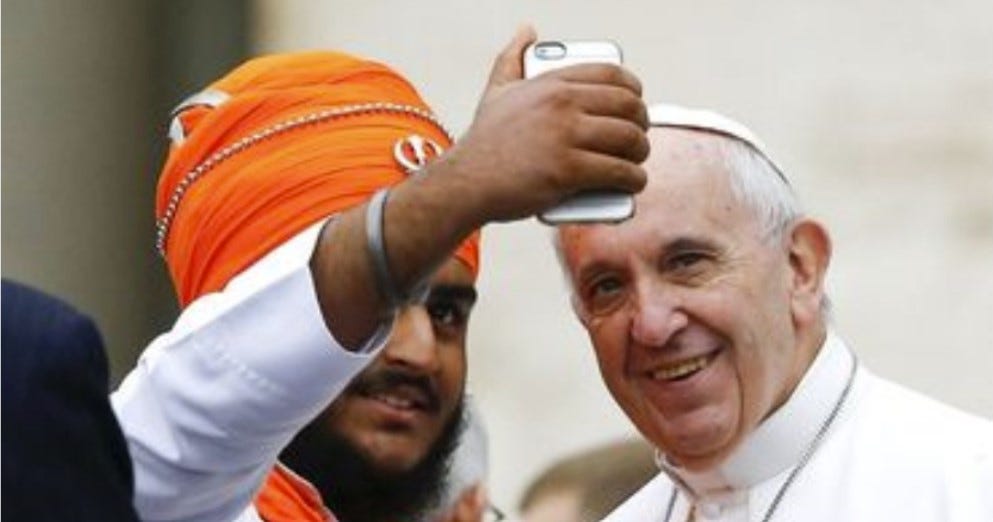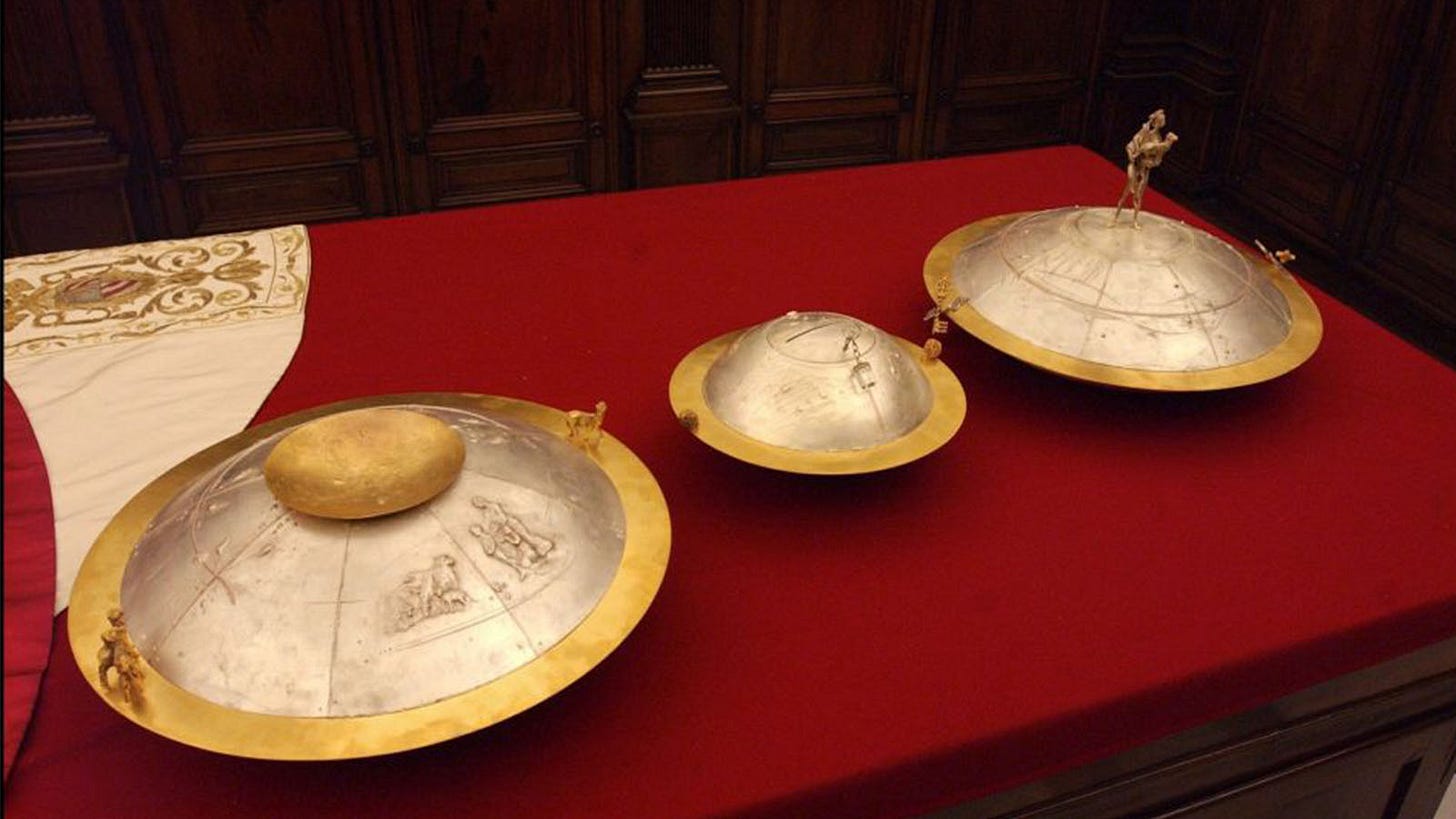Betting on elections in the Sixteenth Century
It started with neighborhood gossip in Rome. The most common form of betting was called maschio et femina (masculine or feminine) - betting on the sex of unborn children of a specific pregnant woman in the neighborhood. Unfortunately, when the game proved popular, the brokers themselves got in the act. They either faked a nonhuman birth or declared that a dead hermaphrodite was born.
Then, the wagers moved to the papal election (scommesse a fare il papa). Speculation usually began even before the pope died. Normally, a pope has to die before another one gets elected. [Recent counterexample was Pope Francis. He was elected despite the previous Pope Benedict XVI being very much alive.]
When princes and cardinals prepared for a possible conclave, the city began to speculate and place bets on possible successors to the papal throne. Once the pope had died, speculation grew as the cardinals prepared for the conclave by coming to Rome. The punters got information about the cardinals who were papabile - usually from the servants at the Vatican. The punters knew about each cardinal’s career and political alignments.
Dateline: the Banchi, Rome
The brokers who took the wagers were wealthy merchants, typically cloth merchants, spice dealers, apothecaries, and bankers that had their offices in the financial district called the Banchi in Rome.
Why the Banchi?
(1) It was strategically located: From the quarter of Ponte stretched from the Florentine national church of San Giovanni dei Fiorentini to the Old Mint (Zecchia Vecchia) near the bridge leading to the Vatican.
(2) It was adjacent to the quarter of Parione where most of the newsletter writers and the printers had their offices and shops.
(3) This was where the Piazza di Pasquino is located - Romans congregated around Pasquino to hear the latest news, read invectives mocking the cardinals and gossip. The tradition continues till today.
(4) Most importantly, the Banchi was close to the Ghetto where many Jewish pawnbrokers and moneylenders lived and plied their trade. These Jewish merchants and dealers actively served as brokers.
Habemus Papam - (We have a Pope)
In his bull of 21 March 1591, Cogit nos, the Pope Gregory XIV forbade (under pain of excommunication) all betting concerning the election of a Pope, the duration of a pontificate, or the creation of new cardinals. There must have been enough betting in each category for the Pope to specifically name them.
There were some arrests of guilty parties but it was clear that some of the cardinals themselves (probably through their employees) were surreptitiously placing bets on papability. Since the cardinals themselves were meting out the law, they did not go too strict to enforce it.
Executive summary: Cogit nos eventually ended formal gambling on papal elections. [It did little to illegal gambling on it.]
To understand the importance of papal electoral gambling, we need to realize that the Popes had a lot of political and economic power in Catholic countries like France, Spain and Italy (and England, Scotland and Ireland). Catholic churches owned vast tracts of land, ran businesses and funded armies.
The 1550 Papal Conclave
Ambassadors and agents were not the only ones who had full knowledge of the conclave's proceedings; equally well-informed were the bookmakers of Rome. This conclave provides the most extensive information on the practice of betting on who would become pope. The sources for this conclave supply the betting odds on the papabili and the sums of money that changed hands.
Frederic Baumgartner (in his book, Behind Closed Doors: A History of Papal Elections) wrote about the 1550 election process
The Venetian ambassador in Rome in particular kept close track of the wagering. He reported: "It is more than clear that the merchants are very well informed about the state of the poll, and that the cardinals' attendants in Conclave go partners with them in wagers, which thus causes many tens of thousands scudi to change hands."
By the end of the conclave one bookie was reported to have made 20,000 scudi on the wagering. Gianmaria Del Monte had entered the conclave as the betting favorite at 20 to 100, but three days later Reginald Pole's odds were at 25 to 100. On December 5 Pole was the wagering favorite at 95 to 100 but fell back to 40 to 100 after his failure to be elected in that day's scrutiny. When the first group of French cardinals arrived on December 11, he was still at 40 to 100, but a month later his odds were 16 to 100. As the conclave dragged on, there were bets on when and if it would elect a pope. On January 22, the odds against the conclave ending in February were 50 to 100, 20 to 100 for March, and 10 to 100 that it would ever elect a pope.
During the process, one cardinal died. There were accusations that he was poisoned to secure enough votes for a specific candidate. Accusations of poisoning led to an autopsy, and the anatomist who conducted it declared that he found such clear evidence of poison that he could not be more certain than if he had administered the poison himself!
Executive conclusion of the 1550 Enclave: Del Monte became the Pope (Julius III) and promptly enveloped himself in a scandal by taking a beggar boy as his adoptive ‘nephew’, anointed him as the “Cardinal Nephew” and took him to bed.
Jorge Mario Bergoglio Stories
Pope John Paul II anointed Bergoglio as the Cardinal of Buenos Aires. Bergoglio was known for his dislike of pomp. He would often go around without his formal attire among the public. Once he was performing the “washing the feet” ritual of the church, a local nouveau riche man thought Bergoglio was the coffee boy and promptly ordered him to serve him coffee. Bergoglio quietly brought him coffee. The man was shocked to realize that he was the cardinal.
John Paul visited Mexico several times. There is a Nunciature in Mexico City. It happens to be where I used to live in the south of the city. I used to go to a weekend market there to eat quesadillas de huitlacoche on blue corn tortillas. [It is hard to explain what it is - if you do not know.]
Just in the next stall, some people from the Nunciature sat down to eat breakfast. I had no idea who they were. But, the stallowner, where I ate, knew. He told me that “the tall one is Jorge Mario Bergoglio.”
Executive Punchline: Jorge Mario Bergoglio became Pope Francis fifteen years later.
Dr Luis Antonio Tagle
He is the frontrunner of the coming conclave to elect the new Pope. The betting market puts his electability at 30-40 percent at present. He has several unique characteristics: He is from the Philippines. Hence he is Asian. He would be the first Asian - if elected. His mother tongue is Tagalog. He has a doctorate in Divinity from the Catholic University of America. He oversees the multibillion dollar fund of the Vatican - along with a billion dollar a year income portfolio. The global landholding of the Catholic Church is enormous - there is not much publicly known. He wants to make all of that transparent. As a result, many cardinals oppose him - either publicly or silently. That might be a problem for him to get 90 of them to vote for him.
The other strong candidate is Pietro Parolin - a Vatican insider - the Secretary of the State of the Holy See. He is well-known for his explicit political power plays.
The Election
Cardinals take turns casting their votes on a simple card that says, in Latin: "I elect as Supreme Pontiff." They walk in line, in order of seniority, and place their cards inside the large silver and gilded urn.
Three scrutineers will then count the votes as they are read out loud. All the paper cards are then threaded together and burnt.
Two furnaces are installed at the back of the Sistine Chapel for the conclave. The black smoke means no outcome, the white smoke means a new Pope has been elected. The election requires that one man wins two thirds of the total votes of all the cardinals eligible to vote. This time, there are 135 of them.
Executive conclusion: If Pope Francis’s gamble to choose cardinals of his own image pays off, we can have a quick conclusion of the process.
Executive side observation: The Pope is *not* the official title of the head of the Catholic Church. It is an affectionate term “El Papa” - the father. When I first went to Mexico, I did not know the difference between “el papa” and “la papa”. One means the Pope and the other means potato. I wrote the wrong answer in my first written exam when I was learning Spanish.
Official titles of the head of the Catholic Church: Supreme Pontiff of the Universal Church, Vicar of Jesus Christ, Successor of [Peter] the Prince of the Apostles, Primate of Italy, Archbishop and Metropolitan of the Roman Province, Bishop of Rome, Sovereign of the State of the Vatican City, and Servant of the Servants of God [Note: El Papa is not one of his official titles.]










